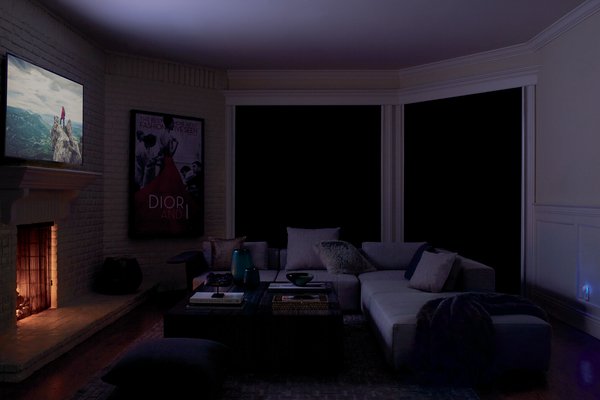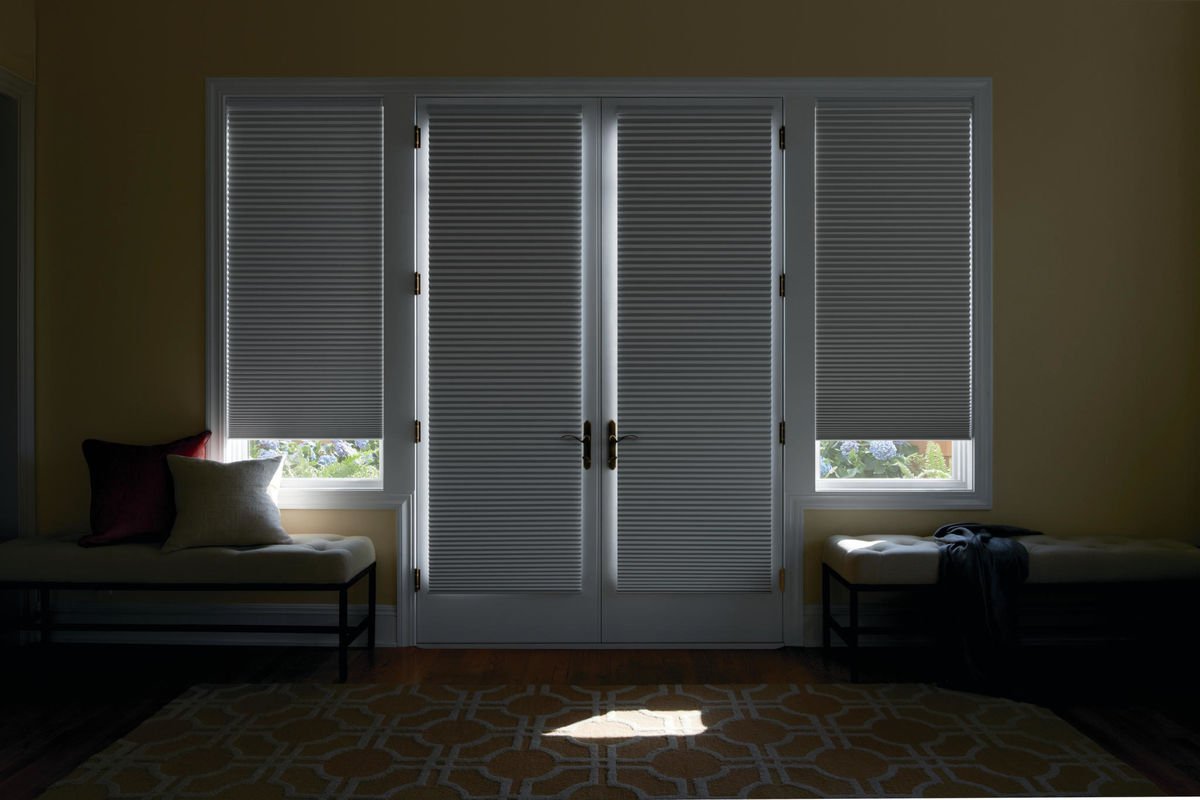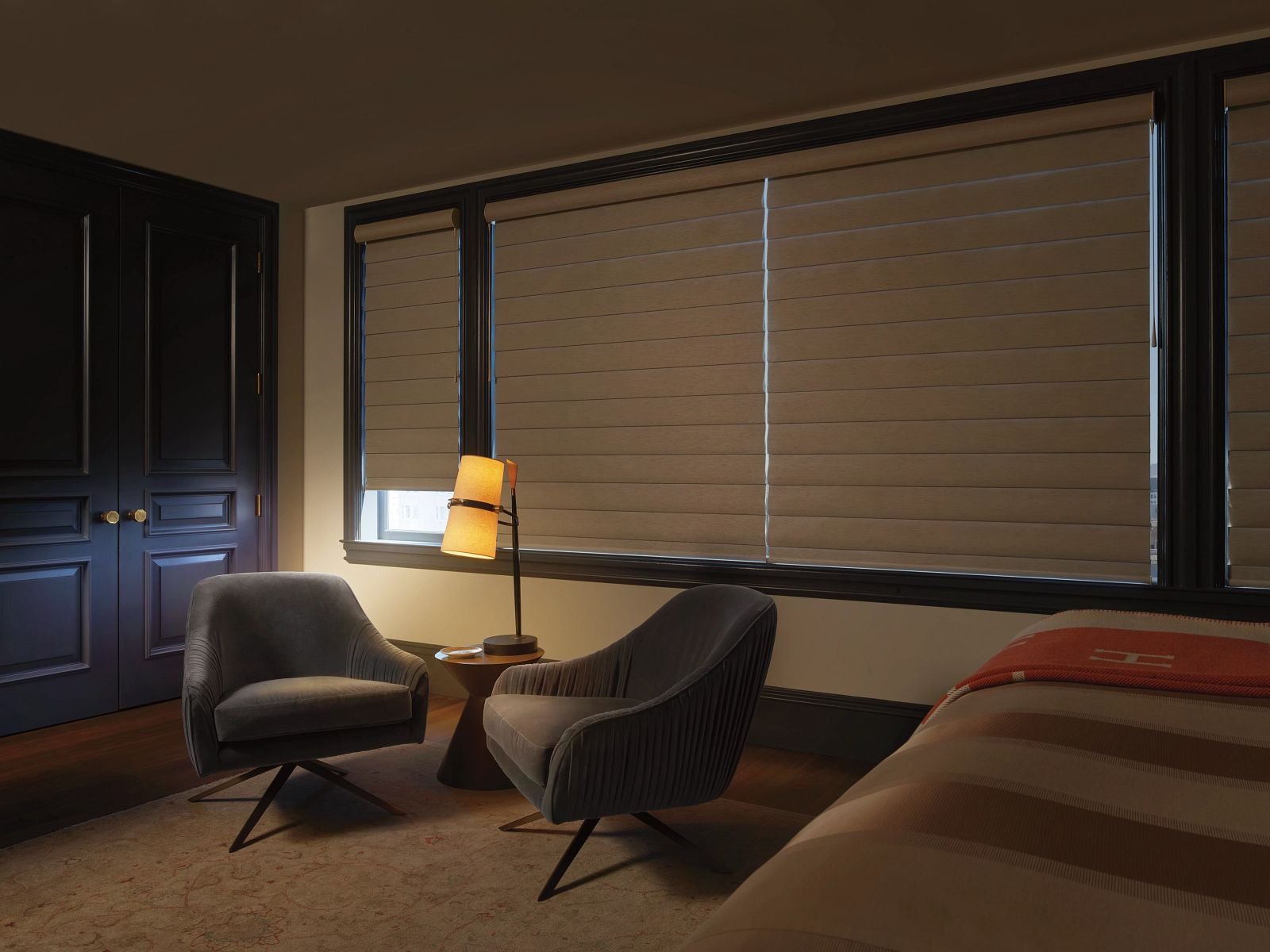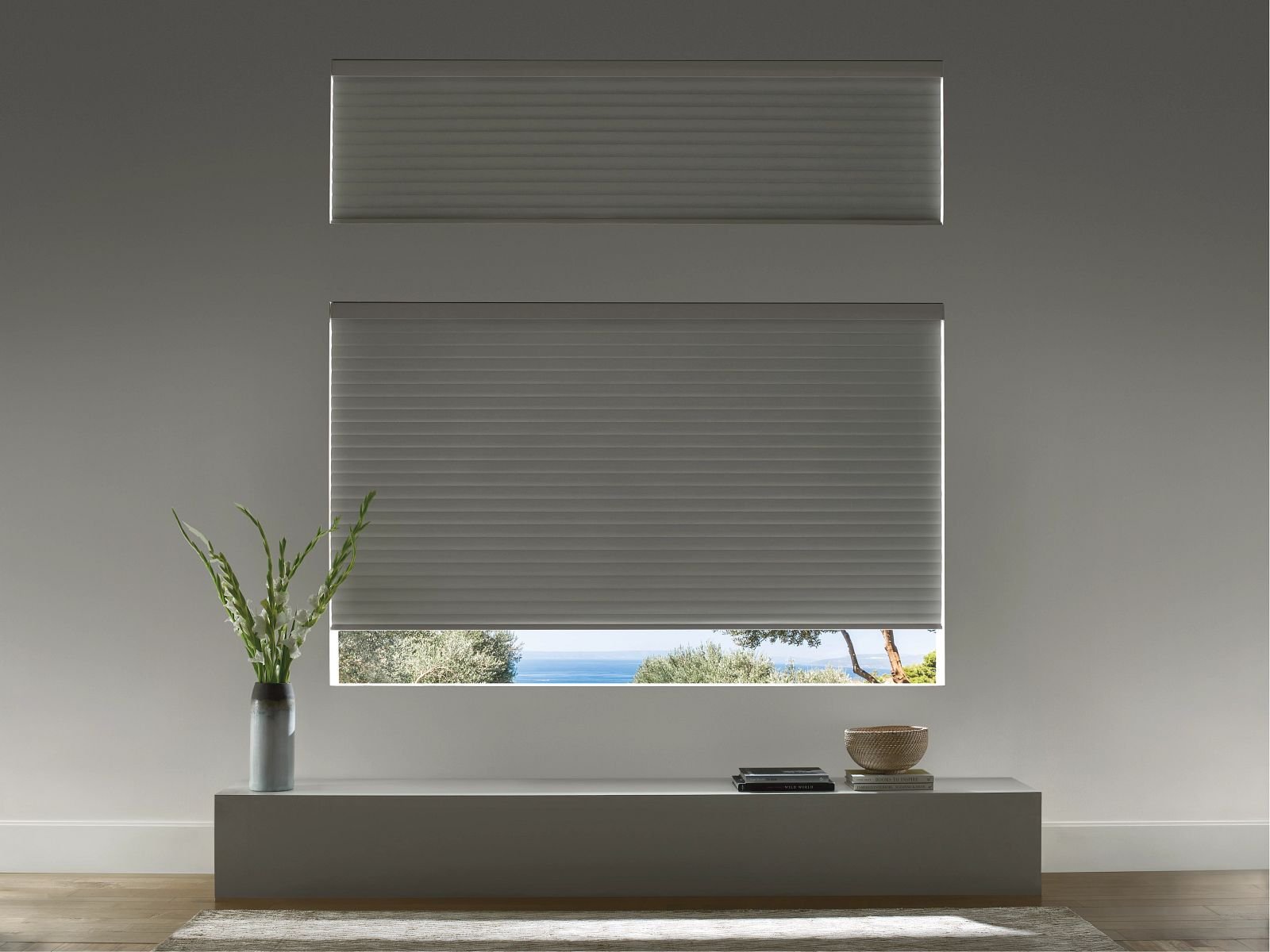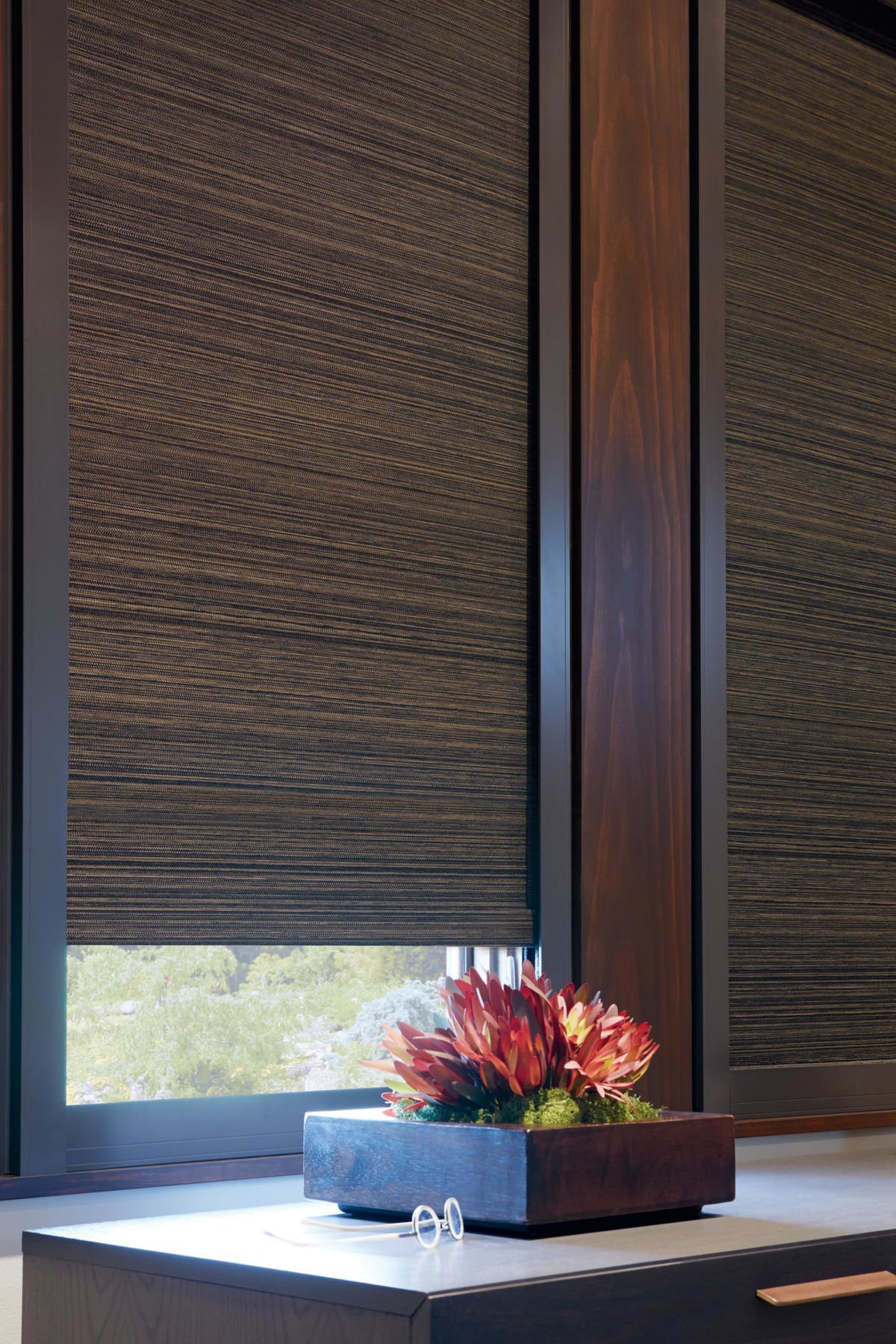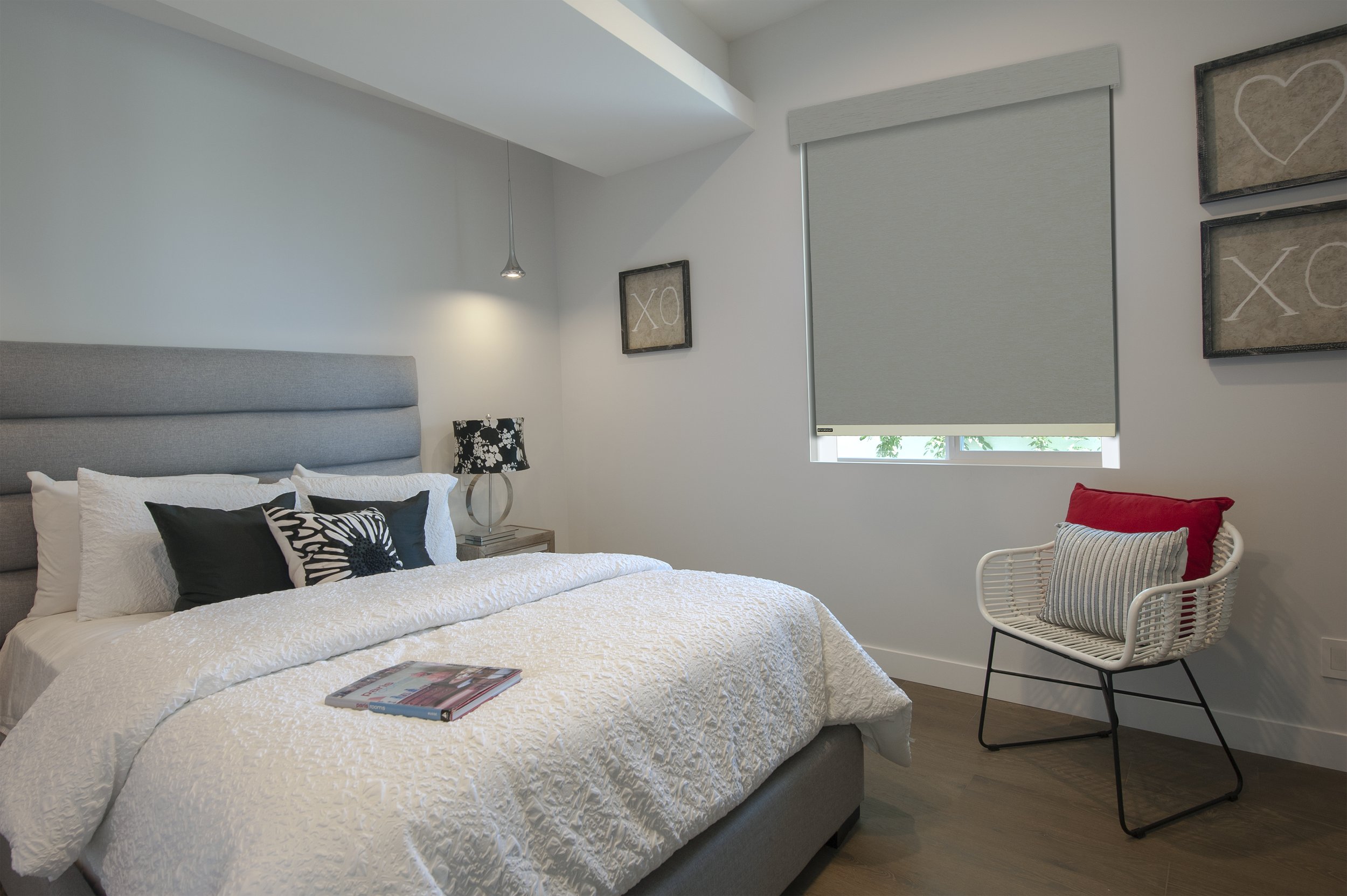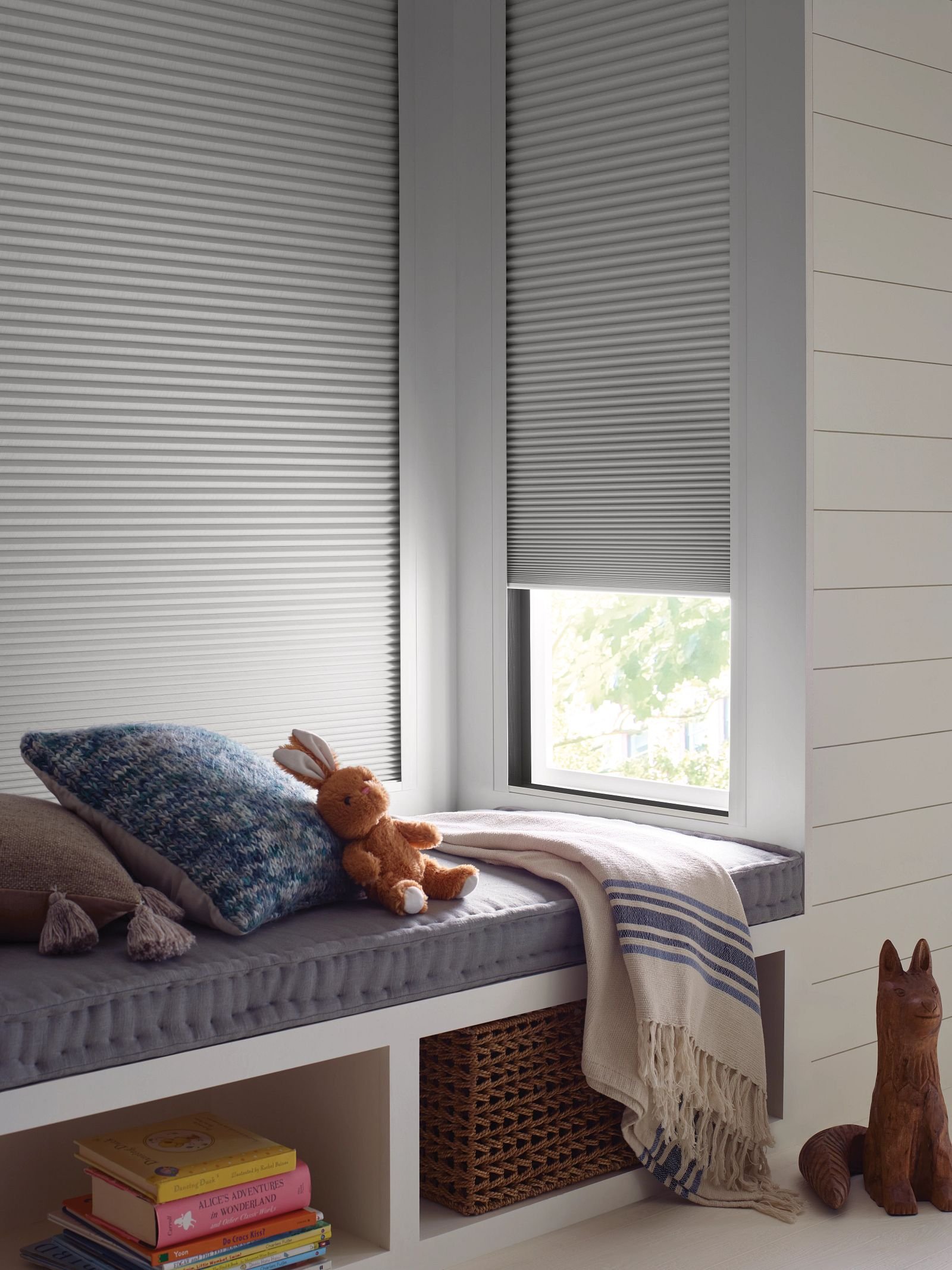Light Control with Window Coverings
Do you want total black-out or some light to filter in?
Duette with LightLock from Hunter Douglas
What is the difference between Room Darkening and Blackout?
The terms tend to be used interchangeably when it comes to window treatments. However there is a slight, but very important difference. Both room darkening and blackout shades utilize completely opaque fabrics and materials to block light from coming through. Be careful when you are shopping for window coverings and you are looking for “blackout” shades. Maybe you are very light sensitive, or need to sleep during the day. Maybe you have a bright streetlight outside your bedroom window, or the neighbour has a motion spotlight that wakes you up. Understanding the difference between room darkening and blackout is important before you get started.
Room Darkening
Room darkening refers to a window treatment that blocks MOST of the light. The funny thing about light, is that is can go around corners (diffraction) and it has no end, so unless there is an obstruction, light will shine through. So while a room darkening window treatment may be made from 100% opaque (or “blackout”) fabric, the light will creep around the sides and enter your room. Window treatments have light gaps on the edges, which allows some light to leak through. Room darkening can be enhanced by mounting the shades in front of the window, rather than within the opening. This allows you to make the shade larger than the window so it overlaps and reduces light gaps. Light reducing strips can also be installed behind the shades on the sides and even the sill to reduce the light that comes through in those areas, but won’t stop it completely. Drapes offer additional room darkening by using a ‘blackout” liner and by covering more of the window and areas surrounding the window. For most situations room darkening is adequate, but in some cases full blackout is required.
Blackout
Blackout window treatments stop 99-100% of light entering a room through the window. In order to do that, every part of the window/opening has to be covered to obstruct the light. This is achieved by using light blocking channels. These channels attach to the sides and sill of your window so that when the shade is lowered, they completely cover all of the window opening and stop the light from leaking around the edges. This can be achieved with honeycomb or cellular shades, and roller shades.
Both room darkening and blackout options are great for bedrooms and media rooms, or anywhere you need more light control. They also block up to 100% of UV’s so they protect your floors, walls, furniture, art and decor from the sun’s damaging rays. Want to learn more? Call to book your free showroom or in-home consultation.
There is a lot to consider when investing in window treatments and it’s hard to know how much to invest. That’s why we created this free window treatment pricing guide. It’s a free download with TONNES of info that you can use, and price comparisons of all different types of window treatments.

